Novation Launchkey Series MIDI Keyboard Controllers
The Novation Launchkey series represents a versatile and highly regarded range of MIDI keyboard controllers designed to meet the needs of musicians, producers, and performers across all experience levels.

With models spanning from 25 to 88 keys, the Launchkey series offers an intuitive and comprehensive toolset for music creation, seamlessly integrating with digital audio workstations (DAWs) such as Ableton Live while maintaining compatibility with other platforms like Logic Pro, Cubase, and FL Studio.
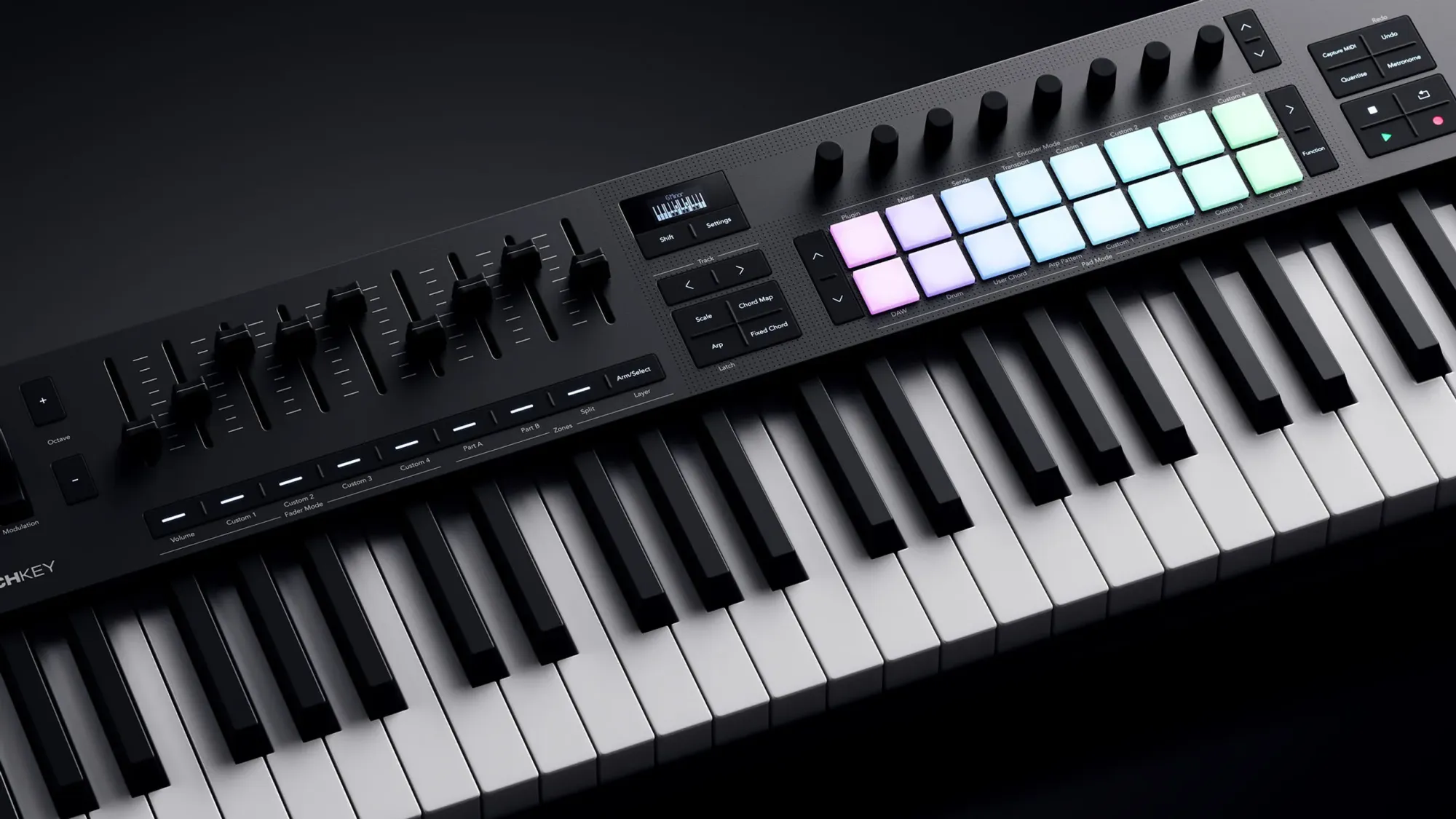
Whether you're a beginner stepping into music production or a seasoned professional seeking a reliable controller, this analysis aims to equip you with the insights needed to evaluate the Launchkey series.
Overview
The Novation Launchkey series is engineered to serve as an all-in-one solution for music production and performance. Its primary appeal lies in its deep integration with Ableton Live, a popular DAW among electronic musicians and producers, making it an ideal choice for those who rely on this software. However, its versatility extends beyond Ableton, thanks to Novation’s InControl technology and customizable MIDI mappings, ensuring it can adapt to a variety of workflows. Available in multiple configurations—Launchkey Mini (25 mini keys), 25, 37, 49, 61, and 88-key models—the series caters to diverse needs, from portable setups to full-sized studio workstations. At its core, the Launchkey series is designed to streamline the creative process. It offers a range of features such as velocity-sensitive keys and pads, rotary knobs, faders (on select models), and creative tools like scale modes, chord modes, and an arpeggiator. These elements not only enhance functionality but also inspire musical exploration, making the Launchkey a valuable asset for both novices and experts. Priced competitively, it strikes a balance between affordability and professional-grade performance, positioning it as a standout option in the MIDI controller market.
Build Quality and Design
The Launchkey series boasts a robust yet lightweight construction, combining durability with portability. Each model features a sleek, matte-black finish that exudes a modern, professional aesthetic, complemented by subtle orange accents on some versions for a touch of visual flair. The chassis is made of high-quality plastic, which keeps the weight manageable while maintaining structural integrity. For instance, the Launchkey 25 weighs approximately 1.83 kg and measures 463mm in width, making it easy to slip into a backpack for mobile producers. Larger models, such as the 61 and 88-key versions, are heavier but remain practical for studio use or transport between workspaces.
The keybed is a critical component of any MIDI controller, and Novation has tailored it to suit different playing preferences across the series. The 25, 37, 49, and 61-key models feature synth-action keys, which are lightweight and responsive, ideal for playing electronic instruments, synths, or fast passages. These keys have garnered praise for their smooth feel and consistent velocity sensitivity, though some users of the Launchkey Mini have reported occasional inconsistencies in velocity response due to its smaller key size. In contrast, the Launchkey 88 stands out with its semi-weighted keybed, offering a more substantial, piano-like feel that appeals to players who need greater resistance for expressive performances or virtual instrument control.
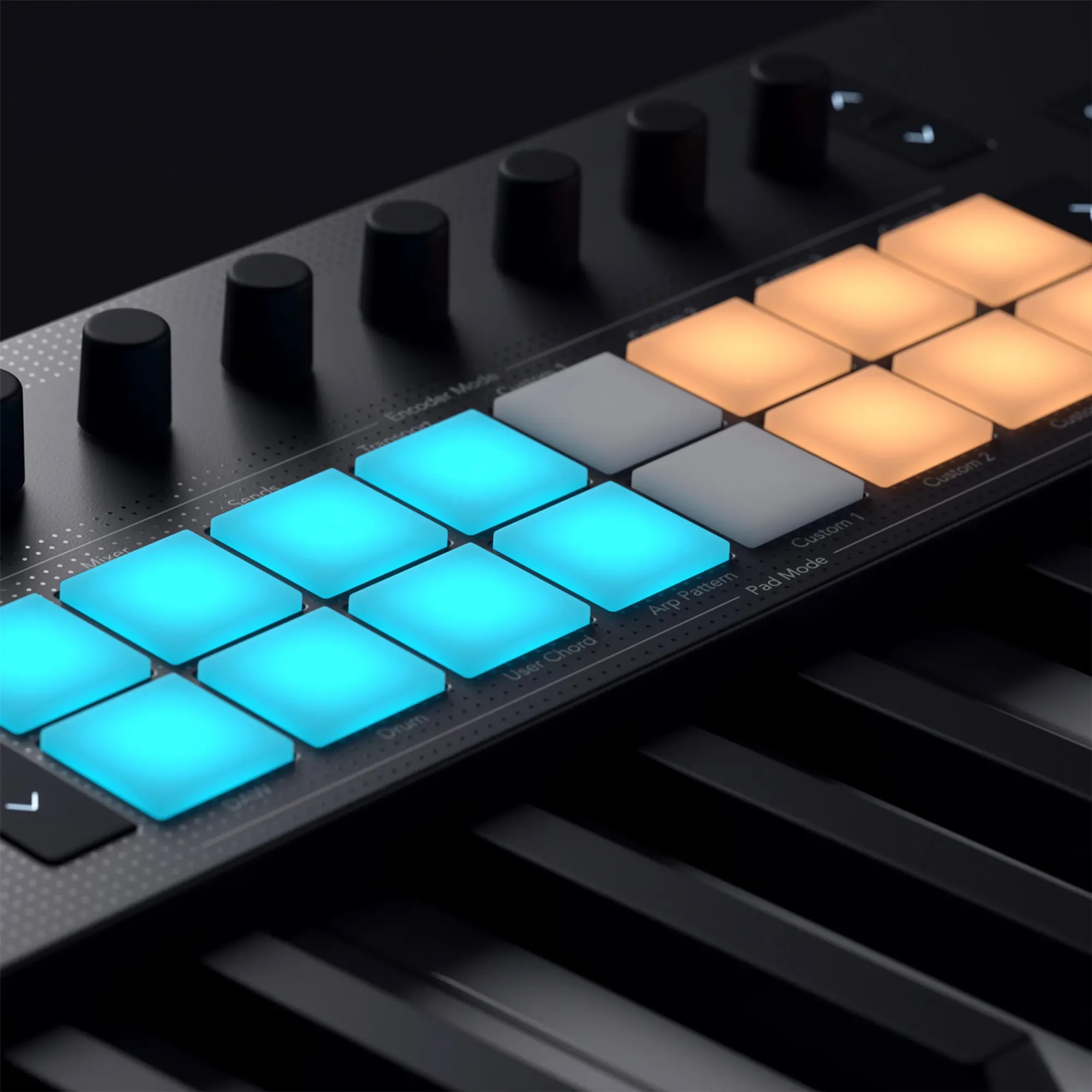
Another highlight of the Launchkey’s design is its 16 velocity-sensitive pads, present across all models. These pads are backlit with RGB LEDs, providing clear visual feedback that’s particularly useful in dimly lit environments or during live performances. The pads are responsive and versatile, excelling at triggering clips in Ableton Live, playing drum patterns, or launching samples. While the keys on most models lack aftertouch—a feature that allows additional expression by applying pressure after a key is pressed—the pads do offer selectable aftertouch, providing an alternative for dynamic control.
Controls and Functionality
The Launchkey series is equipped with an array of controls designed to give users hands-on command over their DAW and creative process. All models include eight rotary knobs, which can be assigned to parameters such as volume, pan, or device settings. The 49, 61, and 88-key versions also feature nine faders, a significant advantage for mixing and adjusting track levels with precision. These faders enhance the controller’s utility in a studio environment, where tactile control over multiple tracks is essential.Transport controls are standard across the series, with dedicated buttons for play, stop, record, loop, and navigation functions. These are intuitively placed for quick access, reducing reliance on a mouse or trackpad during recording or playback. A particularly innovative feature is the capture MIDI button, which allows users to retrospectively record their playing even if they weren’t actively recording in their DAW. This ensures that spontaneous ideas are preserved, a boon for musicians who thrive on improvisation.
Customization is a key strength of the Launchkey series, facilitated by Novation’s Components software (available as a standalone app or web-based tool). Through Components, users can create custom mappings for the knobs, faders, and pads, assigning them to specific MIDI continuous controller (CC) messages or even keystrokes. This level of flexibility makes the Launchkey adaptable to virtually any software or workflow, from controlling virtual synths to triggering effects in a live setting.
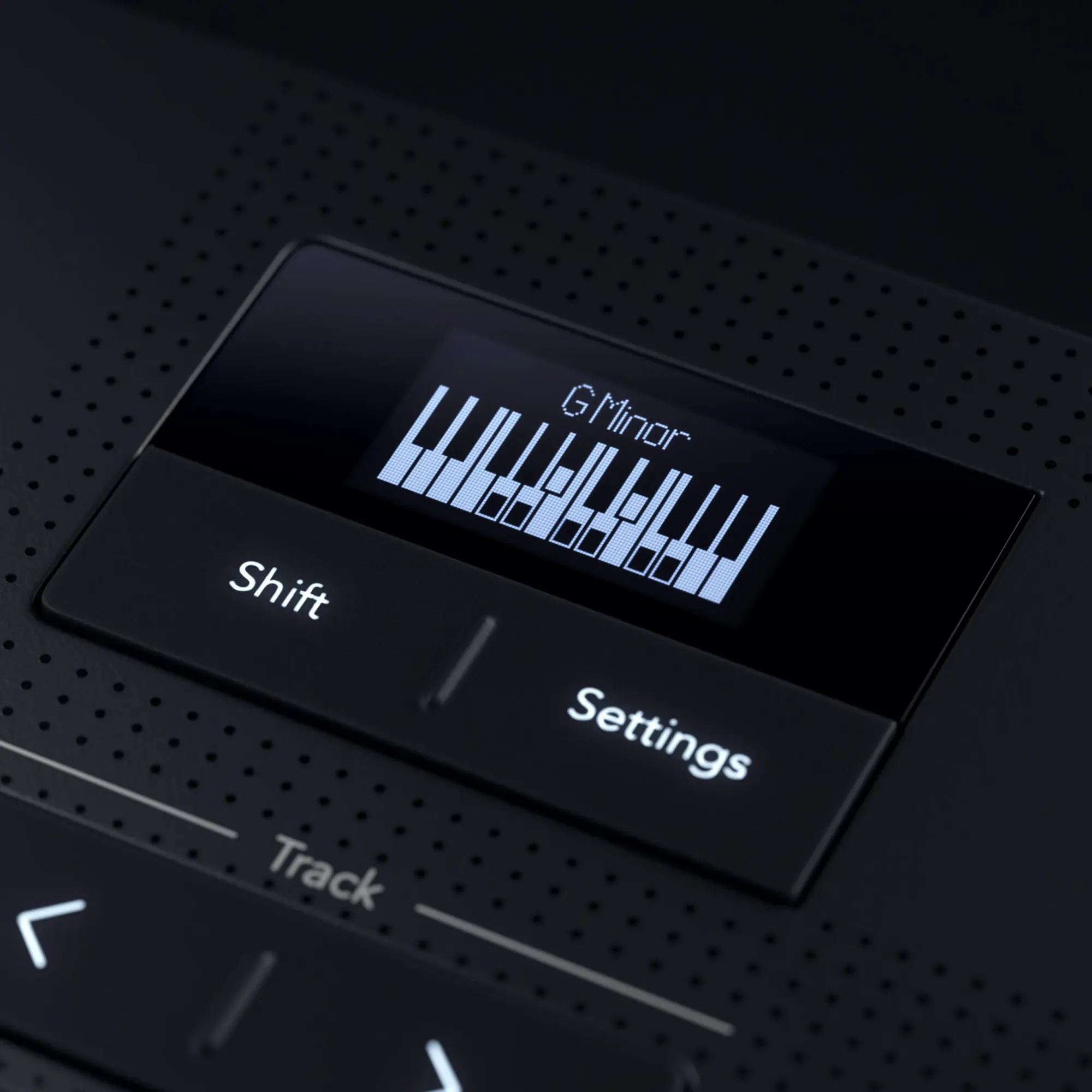
Software Integration
The Launchkey series truly excels in its integration with Ableton Live, leveraging Novation’s InControl technology to deliver a near-effortless experience. Upon connecting the controller to Live, its controls automatically map to the software’s functions, allowing users to launch clips, adjust volumes, control devices, and navigate sessions without touching their computer. This tight integration has made the Launchkey a favorite among Ableton users, with many citing a noticeable improvement in workflow efficiency.For those using other DAWs, the Launchkey remains a viable option through HUI or standard MIDI modes. Novation provides scripts and templates for popular platforms like Logic Pro, Cubase, and FL Studio, simplifying the setup process. While the integration with these DAWs may not be as seamless as with Ableton—requiring some manual configuration—it’s still highly functional. Users have noted that setting up the controller with non-Ableton software can take extra time, but the provided resources and active community support help mitigate this challenge. The ability to customize mappings via Components further enhances compatibility, ensuring the Launchkey can fit into almost any production environment.Additional Features for CreativityBeyond its core functionality, the Launchkey series includes a suite of creative tools designed to inspire and simplify music-making. These features are particularly valuable for beginners or those looking to expand their compositional horizons:
- Scale Modes: Available across all models, scale modes lock the keys to a chosen scale (with 30 options available), ensuring that only “correct” notes are played. This eliminates the risk of hitting a wrong note, making it an excellent tool for those new to music theory or experimenting with unfamiliar tonalities. Modes include Scale Snap, Scale Filter, and Chromatic, offering flexibility for different creative approaches.
- Chord Modes: The controller provides fixed chord, scale chord, and user chord options, allowing users to trigger complex chords with a single key or pad press. This feature is ideal for building rich harmonic progressions quickly, benefiting both novices and seasoned producers seeking efficiency.
- Arpeggiator: The Launchkey’s arpeggiator is a standout feature, offering extensive customization options such as rate, octave range, gate, and pattern. Unique functions like mutate and deviate introduce randomness, generating unexpected and evolving patterns. The strum mode, controlled via the modulation wheel, adds expressiveness by altering the arpeggio’s timing, mimicking the feel of a live performance.
- Capture MIDI: As mentioned earlier, this feature records playing retrospectively, safeguarding spontaneous ideas that might otherwise be lost.
These tools transform the Launchkey from a mere controller into a creative partner, capable of sparking inspiration and supporting musicians at all skill levels.
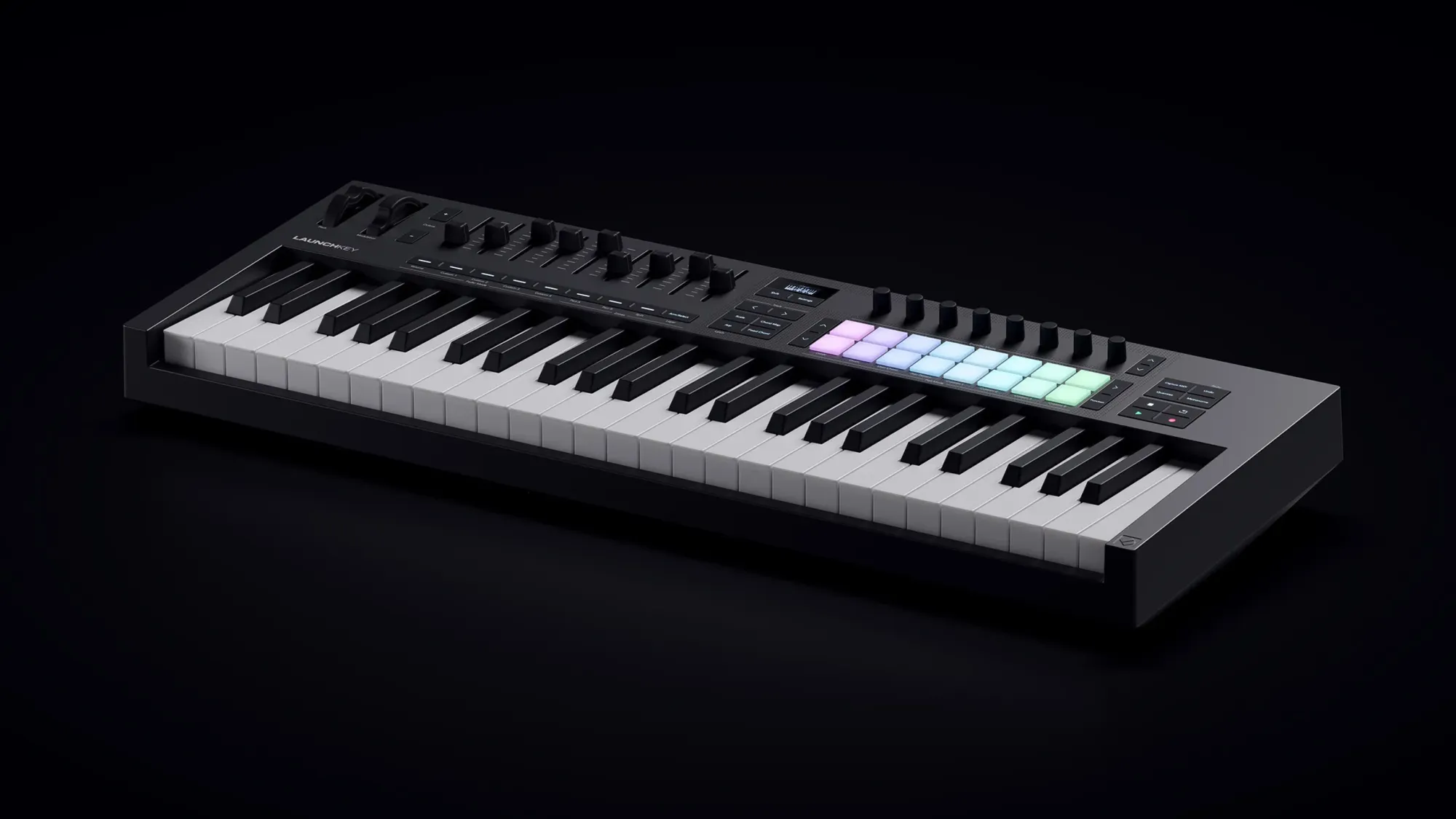
Model Breakdown and Target Audiences
The Launchkey series offers a variety of models, each tailored to specific user needs:
- Launchkey Mini (25 mini keys): This ultra-compact model is designed for portability, making it perfect for mobile producers working with laptops or iPads. Measuring just 330mm in width and weighing under 1 kg, it’s ideal for creating music on the go—in coffee shops, on planes, or in small home setups. However, its mini keys may feel restrictive for some players, and the velocity response has been criticized as inconsistent by a minority of users.
- Launchkey 25: Slightly larger than the Mini, this model remains highly portable while offering full-sized keys. It’s suited for musicians with limited space or those who need a controller for travel, though it lacks the faders found on bigger models.
- Launchkey 37: This version strikes a balance between portability and playability, providing a few more keys for two-handed playing without dominating a desk. It’s an excellent choice for small home studios where space is a consideration.
- Launchkey 49 and 61: These models are geared toward studio use, offering a broader key range and additional controls like faders. The 49-key version is popular among producers who need a compact yet functional controller, while the 61-key model suits those playing more complex parts or requiring extra octave coverage.
- Launchkey 88: With its full-sized, semi-weighted keybed, this model is tailored for pianists or those controlling expansive virtual instruments, such as orchestral libraries. Its size makes it less portable, but it excels in studio settings where a traditional piano feel is desired.
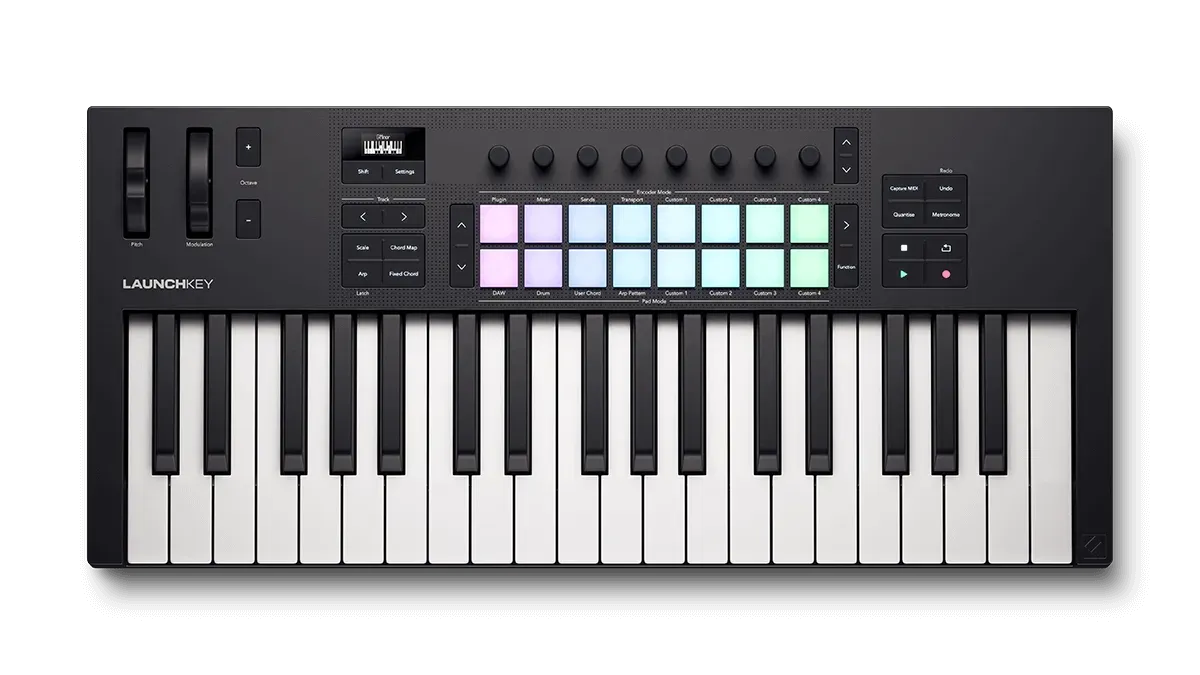
Each model retains the series’ core features—pads, knobs, and creative tools—but varies in size and control options, allowing users to select based on their specific requirements.Pricing and ValueOne of the Launchkey series’ most compelling attributes is its affordability. Priced competitively within the MIDI controller market, it delivers a robust feature set at a fraction of the cost of higher-end alternatives. While exact prices fluctuate, the 25-key model typically retails for around $150, the 49-key version for approximately $200, and the 88-key model remains a value-driven option compared to similar semi-weighted controllers. This pricing structure makes the Launchkey accessible to beginners and hobbyists while still appealing to professionals seeking cost-effective gear.The value is further enhanced by the included software bundle, which features Ableton Live Lite—a stripped-down version of the full DAW—along with virtual instruments like Novation’s V-Station and Bass Station, and sample packs from Loopmasters. For new producers, this package provides a complete starting point, eliminating the need for immediate additional purchases.Potential DrawbacksDespite its many strengths, the Launchkey series has a few limitations worth noting:
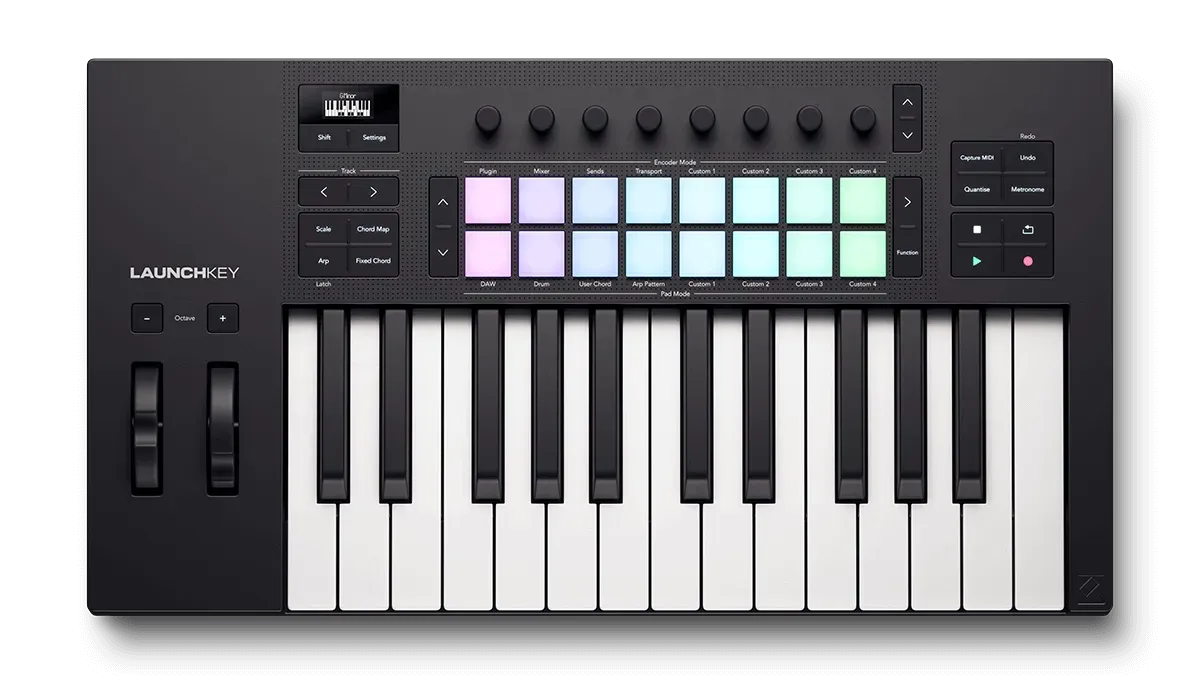
- Keybed on Mini Models: As mentioned, some users have found the Launchkey Mini’s keybed to be less consistent in velocity response, which could frustrate players who prioritize dynamic precision. This issue is less pronounced on full-sized models.
- DAW Integration: While exceptional with Ableton Live, integration with other DAWs requires more effort. Some users have described the setup process for non-Ableton software as “confusing” or time-consuming, though Novation’s templates and community resources help alleviate this.
- Lack of Aftertouch on Keys: The absence of aftertouch on the keys may disappoint musicians who rely on this feature for expressive playing. The pads’ selectable aftertouch offers a partial workaround, but it’s not a full substitute.
- Plastic Construction: While sturdy, the plastic chassis may feel less premium compared to metal-bodied controllers in higher price brackets. This is a common compromise in budget-friendly gear and doesn’t significantly detract from durability.
These drawbacks are minor in the context of the series’ overall performance and value, but they may influence purchasing decisions for users with specific needs.
Evolution of the Series
The Launchkey series has evolved over multiple iterations, with each version refining its design and expanding its capabilities. The MK3 models, introduced several years ago, brought significant enhancements like deeper Ableton Live integration, including the capture MIDI function and improved device control. The latest MK4 models have further polished the experience, introducing an advanced arpeggiator, expanded scale modes, and a more streamlined design. Novation’s commitment to firmware updates ensures that the series remains current, addressing user feedback and adding new features over time. This ongoing development underscores the Launchkey’s longevity and adaptability in a competitive market.
Community and Support
The Launchkey series benefits from a robust user community, with online forums, social media groups, and Novation’s official support channels offering a wealth of resources. Users frequently share custom mappings, troubleshooting tips, and tutorials, making it easier for newcomers to maximize the controller’s potential. This community support, combined with Novation’s responsive customer service, enhances the ownership experience and provides a safety net for technical challenges.Live Performance CapabilitiesWhile primarily a studio tool, the Launchkey series is well-suited for live performance. The RGB pads enable clip triggering, drum playing, or sample launching, while the knobs and faders allow real-time manipulation of effects and parameters. The backlit pads add a visual flair, enhancing stage presence and making it easier to track actions during a set. For electronic musicians or DJs, the Launchkey can serve as a central hub, controlling both software and hardware elements of a live rig.
Comparison with Competitors
In the budget-friendly MIDI controller space, the Launchkey series competes admirably with alternatives like the Arturia KeyLab Essential and Native Instruments Komplete Kontrol series. The KeyLab Essential offers similar features but with a different layout and aesthetic, while the Komplete Kontrol series excels in integration with NI’s ecosystem at a higher price point. The Launchkey’s edge lies in its balance of affordability, functionality, and Ableton-specific optimization, making it a compelling choice for a broad audience.
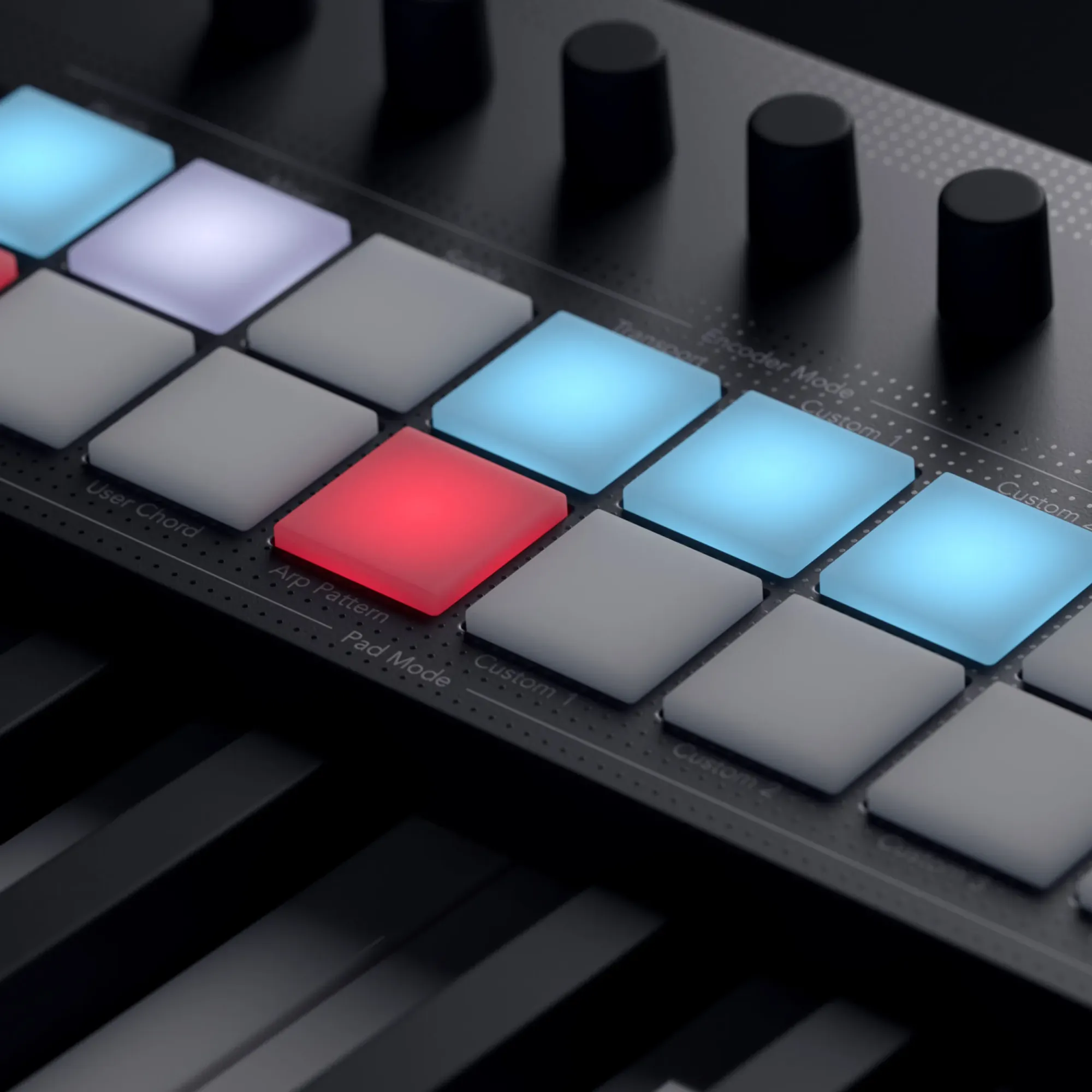
Novation Launchkey Series Comparison
Find the perfect MIDI controller for your music production setup
Conclusion
The Novation Launchkey series is a standout range of MIDI keyboard controllers that deliver exceptional value, versatility, and performance. Its seamless integration with Ableton Live, solid build quality, intuitive controls, and creative features make it an excellent option for musicians of all levels. While minor drawbacks—like the lack of key aftertouch and additional setup for non-Ableton DAWs—exist, they are overshadowed by the series’ strengths. With models catering to every need, from ultra-portable to full-sized, the Launchkey series is a top recommendation for anyone seeking a reliable, feature-rich controller without breaking the bank.Recommendations
- For portability: Launchkey Mini or 25-key model
- For balanced size and functionality: 37-key model
- For studio use: 49 or 61-key models
- For full-sized keyboard needs: 88-key model





